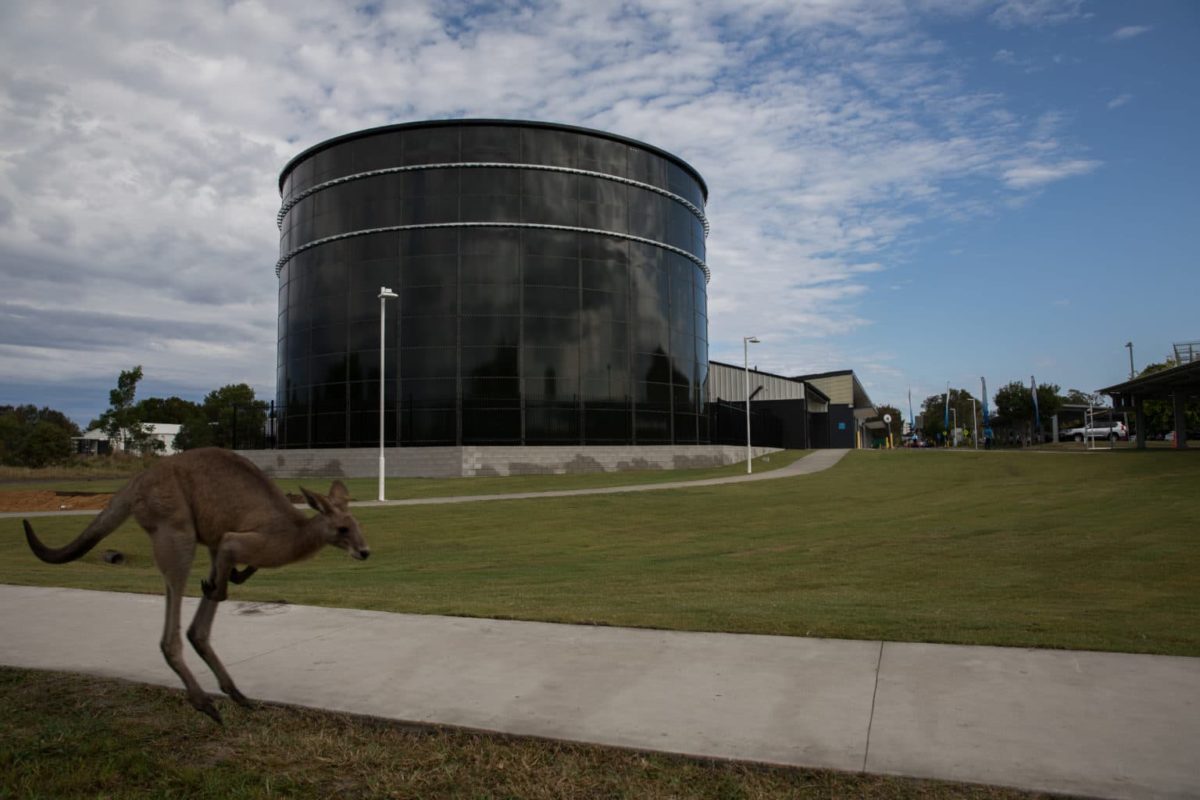An award-winning Australian solar-powered “water battery” has been lauded as an unmitigated success with figures from the University of the Sunshine Coast (USC) revealing the system generated more than 3 GWh of electricity in its first 12 months of operation.
The thermal energy storage tank, located at USC’s main campus on Queensland’s Sunshine Coast, is powered by a 2.1 MW solar PV system which produces enough energy to cool 4.5 megalitres of water, effectively acting as an 8 MW battery. The cooled water is stored and used for air conditioning, which is currently the single biggest user of electricity at the campus, accounting for approximately 60% of its energy use.
Environmental solutions company Veolia built the three-story high tank and installed more than 6,500 solar panels across campus rooftops and carpark structures. Andrew Darr, Veolia's regional energy solutions manager, said the system had surpassed all expectations since it was switched on in August 2019.
In the first year of operation it saved 4,232 tonnes of CO2 emissions – with 3,082 tonnes saved by USC through using solar power instead of grid electricity, and the rest by Veolia feeding solar energy into the grid.
Figures provided by the university show the award-winning system generated more than 3 GWh of solar electricity for use at the Sunshine Coast campus with an additional 2 GWh of electricity fed into Queensland’s energy grid.
“The system has performed beyond expectation during its first year of operation and has attracted global attention for its innovative approach and environmental benefits,” Darr said.
It is expected the system will save more than 100,000 tonnes of carbon dioxide emissions over the 25-year life of the project, equivalent to the emissions of 525 average Australian houses for the same period.
Veolia, which has signed a 10-year agreement to operate and maintain the infrastructure, sells the energy generated by the system back to the university at a rate cheaper than electricity from the grid.
It has been calculated the system will provide an estimated $100 million saving for the university over the 25 years of the project.
USC Vice-Chancellor Helen Bartlett said the system’s success in its first year of operation was a major milestone towards the university’s goal of becoming carbon neutral by 2025, and proof that regional universities can play a key role in innovation.
“USC is the first university in Australia to install a water battery powered by renewables, which is further proof that you don’t need to be in the big cities to do big things,” she said.
“In the first full year of operation, the system has generated more than 3 GWh of solar electricity for our Sunshine Coast campus, representing more than 34% of the total electricity required.
“On top of this, we are tracking our energy savings in real time and using that information to teach our engineers, designers and leaders of the future about the enormous and cost-effective possibilities in renewable technologies.”
This content is protected by copyright and may not be reused. If you want to cooperate with us and would like to reuse some of our content, please contact: editors@pv-magazine.com.




congratulations to USC Sunshine Coast for the support for emerging technologies that can be applied to so any industries not only in Australia but for overseas markets. Again the underfunded reasearch sector of our Universities shines again.
How, and what effort was required, to move the cold water in the tank to the AC head units? Is this a replicable model?
Nice story otherwise just a bit shallow.
Useless article. Theres zero information on how the water tank actually saves C02 emmissions.
I am not surprised by this development. In fact, I believe that further energy savings could be realised through heat exchanging. For example heating water for general use while cooling water for air conditioning purposes. Glycol is an ideal medium for this purpose, is environmentally safe and readily available.
I thought UQ has used a similar system for years?